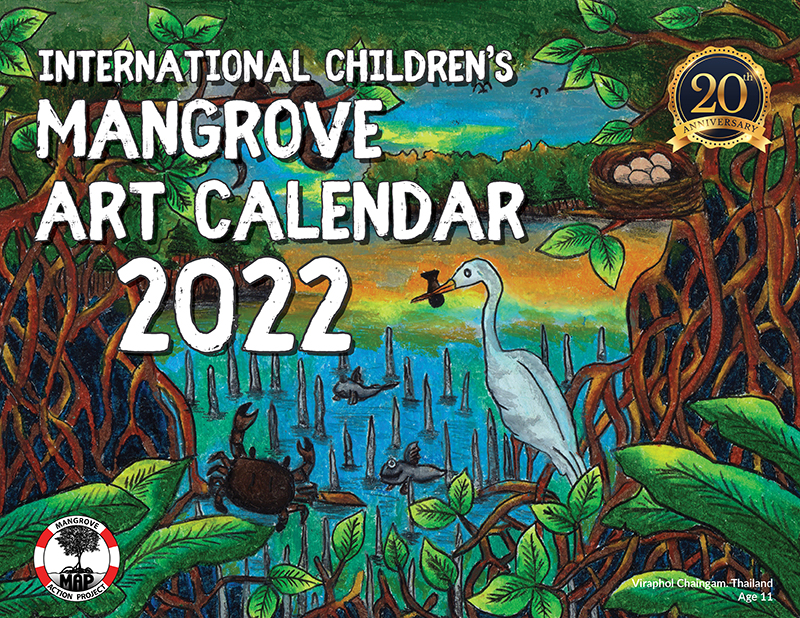MAP Website en Español haga clic aqui FEATURED STORY
Exciting Mangrove Celebrations for World Wetlands Day

CAYMAN ISLANDS – The Mangrove Rangers announce an exciting series of special events to celebrate the 25th World Wetlands Day in early February. The day is celebrated to mark the date of the adoption of the Convention on Wetlands on February 2, 1971, in the Iranian city of Ramsar on the shores of the Caspian Sea. World Wetlands Day was first celebrated in 1997. The Ramsar Convention on Wetlands was the world’s first international environmental treaty. There is only one Ramsar site in Cayman, and that is the Booby Bird Pond and Rookery in Little Cayman which was designated a Wetlands of International Importance in 1994. The Booby Pond is a landlocked saline lagoon that supports the largest red-footed booby population in the Caribbean. There are currently over 2,400 Ramsar sites in the world covering an area of 2.5 million sq. kilometres. And while Grand Cayman’s Central Mangrove Wetlands – the largest contiguous mangrove wetlands in the Caribbean at some 3000 hectares – has for many years been recommended for inclusion as Ramsar site, successive governments have failed to move forward on the nomination. READ MORE
GLOBAL
There Can Be No Climate Action Without Targets to Protect Wetlands
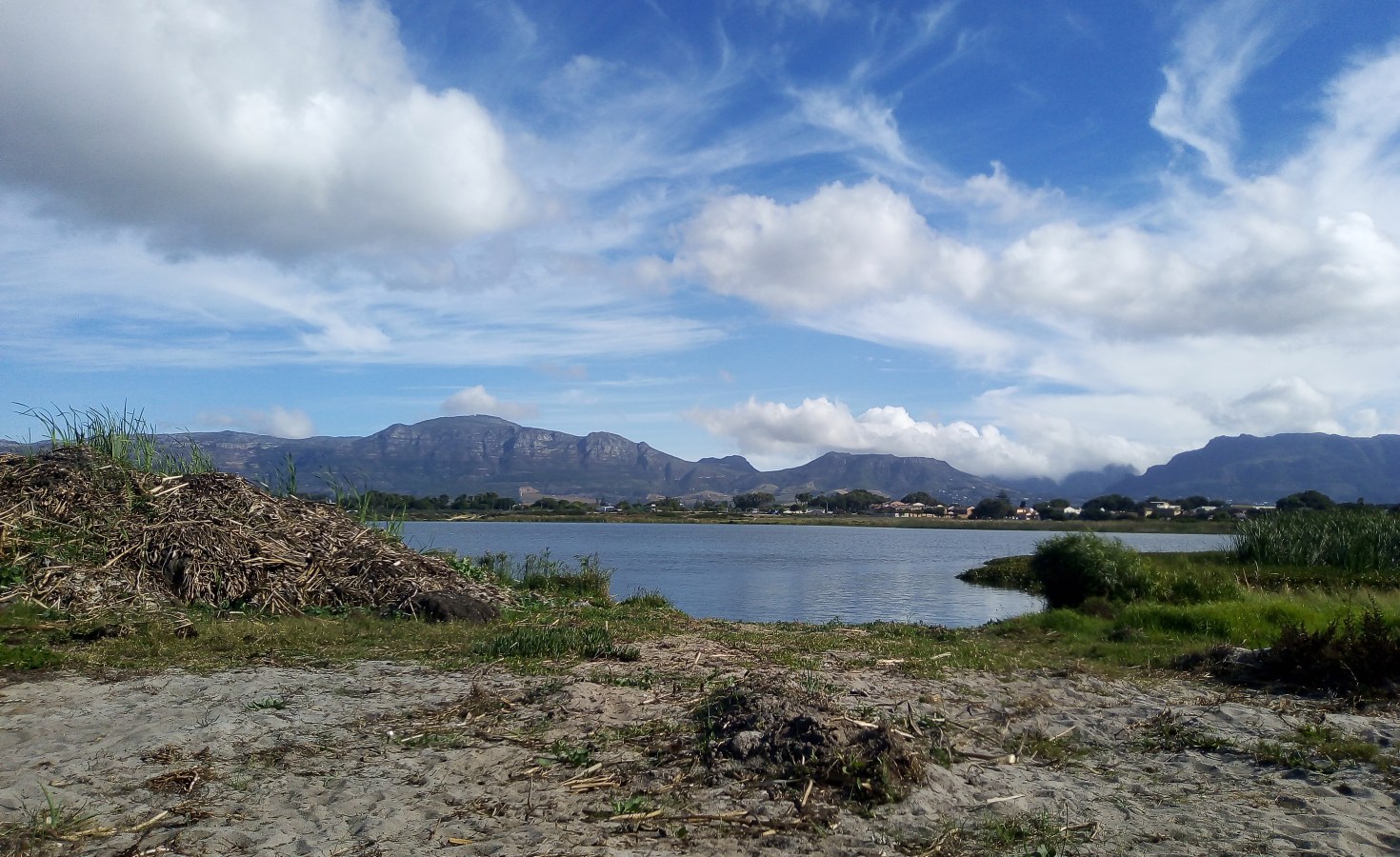
GLOBAL – Targets matter. They focus attention. They allow us to hold accountable the people who make them. Calls to fight climate change were vague until the world agreed a goal to limit warming to 1.5 degrees Celsius, as confirmed at the recent COP26 Glasgow climate conference. Likewise, a wish to halt deforestation has come into focus with the Glasgow deadline of 2030. But where does that leave wetlands? The world’s waterlogged peatlands, mangroves, rivers, salt marshes and tidal flats hold – or lose, if damaged – more carbon than all our trees. They nurture – or make extinct, if lost – more biodiversity than forests. Peatlands damaged by drainage are responsible for more than 5% of global carbon emissions, and intact mangrove swamps hold four times more carbon per hectare than rainforests. Yet these irreplaceable treasures were sidelined in the commitments made in Glasgow. And they will fare little better at this spring’s UN biodiversity conference in Kunming, China, which aims to set an admirable target to conserve 30% of the planet for nature but says little about what should be conserved and where. READ MORE
AFRICA
The Red List of Trees of Madagascar

MADAGASCAR – The Red List of Trees of Madagascar provides the first comprehensive assessment of the conservation status of the trees of Madagascar. Madagascar is home to 3,118 tree species, making it the twelfth most species rich country in the world with respect to tree diversity. Moreover, 93% of these trees are endemic to Madagascar. Despite Madagascar being home to over 2,900 unique tree species and an increasing awareness of the threats facing plants, until relatively recently there has been limited data available about the conservation status of the country’s trees. In 2017, there were only 379 assessments for trees of Madagascar on the IUCN Red List. Over the past three years, >2,400 assessments have been compiled by researchers from Missouri Botanical Garden Madagascar Program, Kew Madagascar Conservation Centre, University of Antananarivo, Madagascar Plant Specialist Group, and other institutions across the world, in order to provide a full picture of the status of the trees of Madagascar. Over 94% of these assessments represented the first IUCN Red List assessment for the species. This work was funded by the Critical Ecosystem Partnership Fund in a project called “Assessing the Conservation Status of Madagascar’s Trees for Effective Conservation of Key Biodiversity Areas and Protected Areas” and Fondation Franklinia. This is the first comprehensive assessment of the status of the trees of Madagascar. READ MORE
AMERICAS
Mangrove Hummingbird in danger
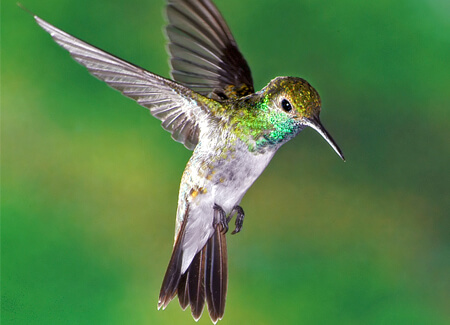
COSTA RICA – Imagine you’re standing in the ocean with your back to the shore—then you see the Mangrove Hummingbird zip past. That’s the usual way people lucky enough to see this bird experience it. The species is found only in mangrove swamps and adjacent vegetation along the Pacific Coast. It’s so closely tied to mangroves that the bird even prefers to feed on mangrove flowers. Sea level rise associated with climate change is one of the biggest threats to the Mangrove Hummingbird. Since mangroves are low-lying, any rise in surrounding waters could quickly inundate the species’ limited habitat. Habitat loss is another issue. Although mangrove logging is illegal in Costa Rica, trees are still cut to make room for shrimp aquaculture, road construction, and charcoal production. This ever-shrinking habitat puts Mangrove Hummingbirds and other vulnerable species at risk, including the Yellow-billed Cotinga, Black-cheeked Ant Tanager, and Turquoise Cotinga. READ MORE
Mangrove deforestation leaves islands ever more vulnerable to climate change

BRITISH VIRGIN ISLANDS – When Donald De Castro was a boy in the 1940s, mangroves lined the shore and cays in front of his family’s small waterfront home in the British Virgin Islands (BVI). “We used to do a lot of fishing in mangroves,” the 86-year-old recalled. “They had snappers and they had different kinds of fish; we caught good fish.” Today, most of those mangroves don’t exist. They have been replaced by land reclaimed to expand the capital of Road Town, which now boasts a cruise ship village, marinas lined with hundreds of yachts, and office buildings housing the territory’s bustling financial services industry. The modern scene illustrates a dramatic economic shift since World War II that has brought unprecedented prosperity to the British overseas territory, a string of small islands that are home to around 30,000 people. The missing mangroves, however, illustrate the ecological consequences of those changes. READ MORE
ASIA
Mangroves moving towards extinction

PAKISTAN – Federal Minister for Maritime Affairs, Syed Ali Haider Zaidi, while talking about the mangrove destruction, recently stated that the entire area of Machhar colony has been encroached upon for three decades. Keeping in mind this statement, one might question the whereabouts of the mangrove forest located in Machhar Colony. Another mangrove forest which is along the Mauripur Road might also vanish with time since conditions are worsening along the coastline. Global warming in Pakistan has been on the rise for decades illustrated by the melting of glaciers in the Himalayas, the worsening climate conditions and increasing deforestation. Mangrove forests, a natural resource in Pakistan, are on the verge of becoming extinct which will further harm the environment. READ MORE
Malaysia’s mangrove-planting fishermen stumble at nature finance hurdle
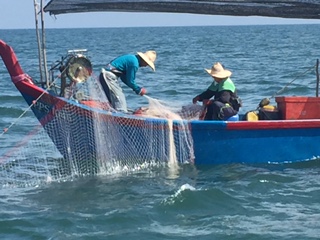
MALAYSIA – Walking across a swamp, retired fisherman Ilias Shafie and a small group of villagers plant mangrove saplings on Malaysia’s west coast, one tree at a time. They have put in some 400,000 mangrove trees since a restoration initiative started two decades ago, in what was initially a bid to increase the catch of local fishermen. Now their work has taken on extra significance as alarm grows over global warming and nature loss, with mangroves regarded as a key weapon in the fight against climate change. But the surge of international concern has yet to help this community win the global finance required to expand its project, highlighting the barriers often faced by groups on the ground seeking to tap into growing funding flows for nature protection. “Mangroves are important to us fishermen – we need them because this is the breeding ground of fish,” said Ilias, 70, recalling how dwindling mangrove forests affected his catch and livelihood, which prompted him to launch the initiative. READ MORE
To unlock the full potential of its mangroves, India needs to first plug gaps in research

INDIA – Involving local communities in plantation projects is crucial for climate action centred on the ecosystem, according to scientist K Kathiresan. Getting things right with mangroves, ecosystems that feature on the global climate agenda for their carbon storage capacity, could set the stage for effective climate action and biodiversity protection in coastal areas, said noted mangrove scientist K Kathiresan. Kathiresan, who has worked extensively in Tamil Nadu’s Pichavaram mangroves, said restoring mangroves with a focus on biodiversity (diverse mangrove plant species and fauna) and in the right place, instead of growing mangrove monocultures, are crucial to mangrove health. He said that the involvement of local communities in the planning, execution and monitoring of plantation projects and a deeper understanding of fauna and micro-organisms associated with these amphibious defenders is key to climate action centred on mangrove ecosystems. READ MORE
China explores involving communities in mangrove restoration
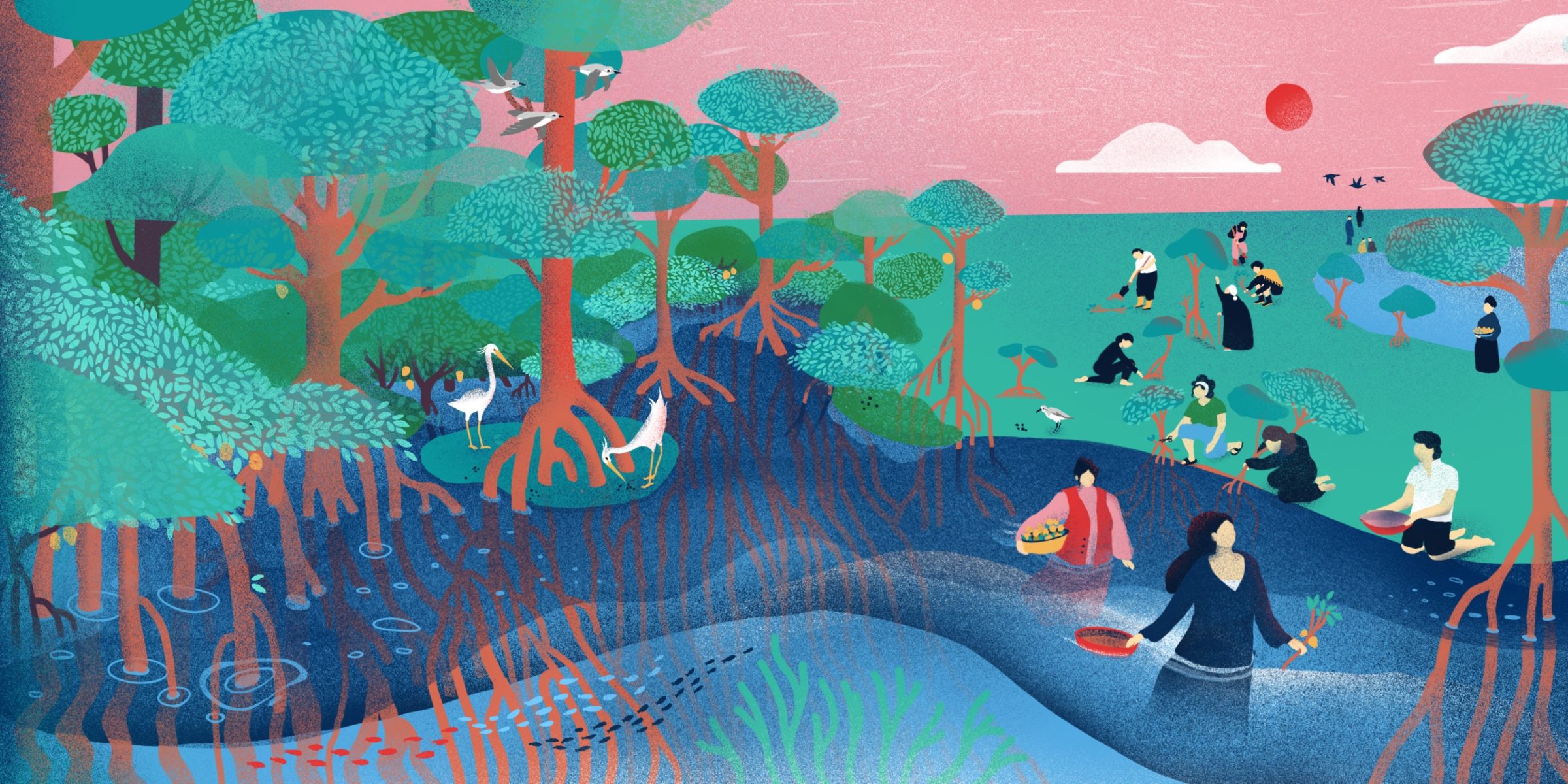
CHINA – The world’s mangroves have been disappearing at an alarming rate. China has been working hard to reverse that trend. Over 75% of its natural mangroves now fall within protected areas, compared to the global average of 42%. And in the first two decades of the millennium, large-scale planting saw China’s mangrove area increase by 23%. Despite these successes, questions have been asked for some years. Are expensive afforestation efforts sustainable? Might they involve unacceptable ecological risks? As the shortcomings of large-scale afforestation have become apparent, many Chinese nature reserves are looking to community participation to help protect and restore mangroves in the long term. Local people can contribute to the design, implementation and evaluation of such programmes. They may also help manage them in such a way as to sustainably use the mangrove ecosystem, for example through eco-friendly aquaculture or ecotourism. Can community participation provide a solution for restoring mangrove ecosystems? China’s mangrove conservation experts and NGOs are trying to find out. READ MORE
Over 100,000 Gallons of Crude Oil Leaks Into the Sea Through Hole in Pipe

THAILAND – An operation to contain 400,000 liters (106,000 gallons) of crude oil that has leaked off the coast of Rayong, Thailand, is currently underway. Recently, a leak occurred near Map Ta Phut at an undersea location. Star Petroleum Refining Public Company Limited (SPRC) owns the pipeline and notified the Department of Marine and Coastal Resources of the problem. The department’s director-general, Sopon Thongdee, stated that stopping the leaking oil from flowing north and reaching Rayong’s beaches was a top priority. According to a statement released by SPRC, the leak occurred at a single location in the middle of the sea, where tankers load and offload oil. A slick of between 180,000 and 200,000 liters was headed for the shoreline between Mae Ramphueng beach and the Khao Laem Ya-Mu Ko Samet Marine National Park, according to Atthapol Charoenchansa, director-general of the Pollution Control Department. READ MORE
Indonesia on track with peatland restoration, but bogged down with mangroves

INDONESIA – Indonesia has recorded mixed progress in its dual programs of restoring tropical peatlands and mangroves, acknowledging that achieving the latter goal will be far more challenging than for the higher-profile peatlands. The government has targeted restoring 1.2 million hectares (3 million acres) of degraded peatlands and 600,000 hectares (1.5 million acres) of degraded mangroves by 2024, with both programs overseen by the Peatland and Mangrove Restoration Agency (BRGM). In 2021, the first year for both programs, the BRGM recorded significant progress on peatlands, restoring 300,000 hectares (741,000 acres), or a quarter of the total. On the second goal, however, billed as the most ambitious mangrove rehabilitation program in the world, it managed to restore just 34,911 hectares (86,267 acres), or less than 6% of the total. “There’s still a lot of work that we have to do until 2024, considering that our target is 600,000 hectares,” Satyawan Pudyatmoko, the BRGM deputy for planning and evaluation, said at a recent online event. Both programs are crucial in Indonesia’s efforts to reduce greenhouse gas emissions; much of the country’s emissions come from deforestation and land-use change, including the clearing of peatlands for oil palm and pulpwood plantations, and mangroves for shrimp and fish farms. READ MORE













